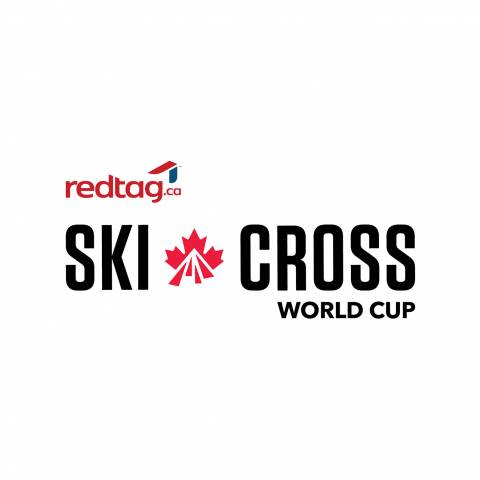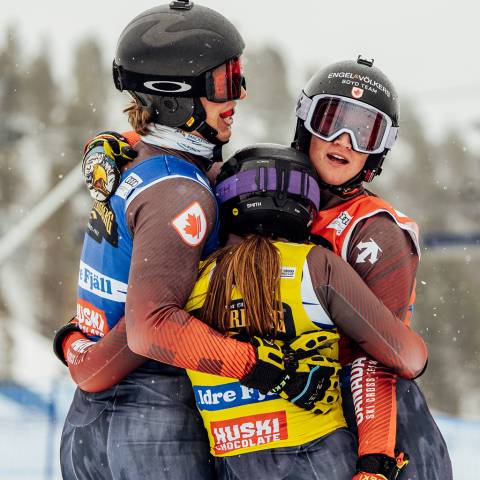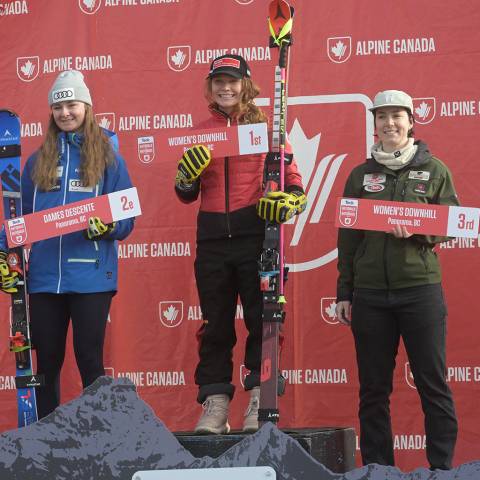It’s a sport that requires great courage and skill in equal measure; strength, agility, balance and technique. And although there have been great advances in ski equipment and technology in recent times, the essence of the sport has remained constant. There are no judges handing out scores; no marks awarded for style. It’s strictly a numbers game in which the time it takes a skier to go from the start to the finish, passing through a series of gates on the way down, determines the outcome of each race. In literal terms, alpine skiing – so called because it refers to skiing at or near the tree line – is the sport of sliding down snow-covered hills or mountains on skis with fixed-heel bindings.
There are several different kinds of alpine skiing, but it is most commonly divided into the six core disciplines ski racers compete in at the Olympics:
DOWNHILL
Because it involves the highest speeds and, as a result, the biggest risks, downhill is the most glamorous of all the alpine disciplines. The world‘s best downhill skiers, including Canada’s own Erik Guay, are the sport’s rock stars. Downhill races feature the greatest vertical drop of all the alpine disciplines. Skiers can reach speeds of up to 130 kilometres per hour on a typical World Cup downhill course, but in certain sections of the famous Lauberhorn track in Wengen, Switzerland, and the Hahnenkamm course in Kitzbühel, Austria, they can go up to 150 kilometres per hour. On a typical downhill course, the gates are quite close together. Each course is designed to test skiing ability at high speed, through challenging turns, shallow dips, flats and jumps. The turns are strategically placed to control racers' speed. Downhill skis are longer than slalom skis, in order to provide more stability at high speed. Ski poles are bent in order to curve around the body as the racer stays in an aerodynamic “tuck position.” The most daring of all alpine skiing disciplines, downhill is also the most synonymous with the recreational sport of alpine skiing. Alongside super-G, it is often referred to as “speed skiing.” The title of downhill world champion is one of the most prestigious prizes in the sport of alpine skiing, and Canada has won medals in the men’s race at three successive world championships, which are held every two years. Jan Hudec earned silver in 2007, before John Kucera struck gold in 2009. With Kucera unable to defend his title in 2011 due to injury, Guay produced a spectacular run at Garmisch-Partenkirchen, Germany, to become the new world downhill champion.
SLALOM
If downhill is defined by speed, slalom is synonymous with technical ability. The world’s best slalom racers use aggression, strength and agility to make their way down shorter courses that feature the most turns of any alpine event. They must pass between poles that form a series of gates arranged in a series of different configurations. The skier with the best combined time from two separate runs is declared the winner. Because slalom skiers take a direct line and knock poles out of the way as they pass through (referred to as “blocking”), they wear protective equipment that includes shin pads, arm guards, padded gloves and face guards. On the women’s side, Canada has several young and talented slalom skiers, including Marie-Michèle Gagnon and Erin Mielzynski.
SUPER-G
Super giant slalom (or super-G, for short) combines the raw speed of downhill racing with the technical skill of slalom. It features long, sweeping high-speed turns on courses that have vertical drops only slightly less steep than in downhill. As such, it is referred to as a “speed discipline.” After first appearing in World Cup competition in 1982, it was added to the world championships two years later and made its Olympic debut in 1988. Canada’s Erik Guay took the Crystal Globe as the overall super-G World Cup champion at the end of the 2009-10 season.
GIANT SLALOM
As the name suggests, giant slalom features a bigger (longer) course than traditional slalom, with at least 30 gates. Considered a technical discipline, giant slalom skiers use skis that are longer than slalom skis but shorter than downhill or super-G skis. Giant slalom generally features two runs – held on different courses on the same ski run. The skier with the fastest combined time wins.
SUPER COMBINED
Consisting of a shortened downhill or super-G run followed by a slalom run, super combined was introduced by the International Ski Federation in 2005. Prior to that, the traditional combined discipline comprised one downhill run and two slalom runs. In both forms of combined, the winner is determined by the fastest aggregate time. Although not technically a discipline in its own right, combined is generally referred to as the fifth alpine skiing discipline.
TEAM EVENT
The 2018 PyeongChang Olympic Games mark the inaugural addition of the Team Event into the Olympics. The event features a mixed team of two men and two ladies competing for their National Teams in a head-to-head slalom with a knock-out format per round. Traditionally, 16 teams are at the start of the competition. The Alpine Team Event made its FIS World Championship debut in 2005, and in the parallel format in 2011. Canada claimed its first medal in this discipline in the 2015 World Championships in Vail/Beaver Creek, Colorado taking home silver.












